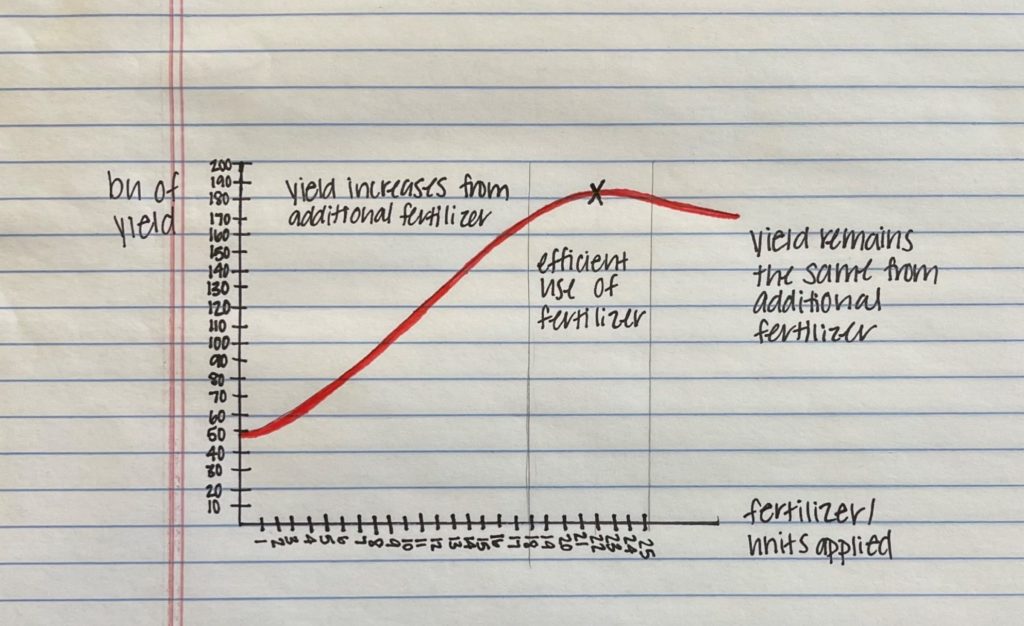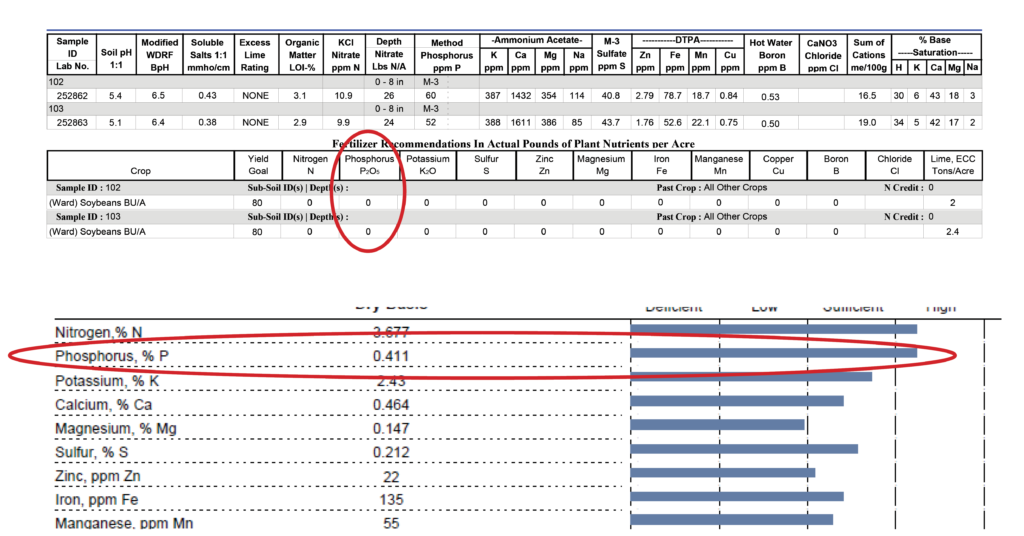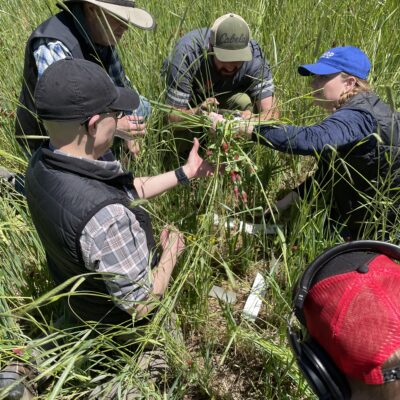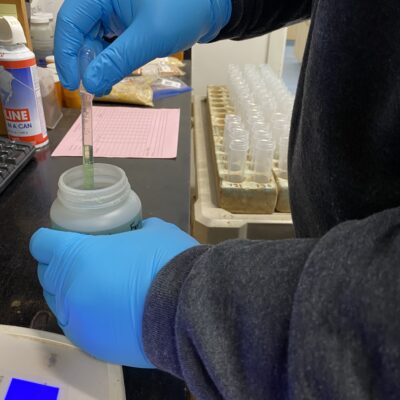Profitability vs. productivity can be a tough concept because those of us involved in production agriculture want to produce more. We want to be more productive, raise higher yielding crops, and achieve and exceed our yield goals. But at what expense does that additional productivity come?
First, a trip down memory lane…
I earned my agronomy degree from the University of Nebraska-Lincoln (Go big red!). While there, I was fortunate enough to take almost all of Dr. Ron Hanson’s agricultural economics courses. In every course Dr. Hanson taught, he reiterated over and over and over the principal of diminishing returns. Now I’d be lying if I didn’t mention that my 19-year-old self wondered when I was ever going to use this. But alas, here we are talking about it all these years later.
What is the Principal of Diminishing Returns-Input Basis?
According to Dr. Hanson’s textbooks (yep, I still have them), “the principle of diminishing returns-input basis is concerned with varying the amounts of one input while all other inputs in the production process are being held constant.”
Wait, what?
This means that if we change the amount of input we add into a system (say phosphorus) and keep all other inputs the same (all other fertilizers, seed, chemicals, etc.), at first the return of product (yield) will increase. But over time, as we continue adding more of the phosphorus, we will see a leveling out of additional yield.

Why is that?
Well, for one, the system can only take so much. Dr. Nick Ward discusses productivity versus fertility in this #TuesdayThoughts video. The summary is that you can change fertility by adding or subtracting nutrients. But you may not be able to change productivity because productivity is determined by the environment and climate the soil is in.
Going back to our economics lesson, we can continue adding phosphorus fertilizer to our heart’s desire (although I do NOT endorse that for a number of reasons–that’s a discussion for another day). At some point, the crop growing in that soil will stop responding to the additional phosphorus. Eventually the environment will even have a negative response to it. Furthermore, once the crop stops responding by producing more yield, we’re wasting money with all this extra phosphorus, not to mention creating all sorts of environmental concerns.
The recommendations on the bottom of your soil test and the sufficiency levels on your plant tissue test make this point. If you see a 0 lb recommendation or a sufficient rating, you can be confident that adding more of that nutrient will not return you any additional productivity (yield) or profitability.

So how do I determine profitability vs. productivity?
Now, I’m not suggesting you dust off the old college textbook when it comes time to make input decisions. But I do suggest sharpening the pencil and really putting some numbers to it. Think realistically about the soils you’re farming, the crop you’re producing, and the prices of that crop. Will the additional inputs required to produce more of that crop actually make you more profitable? Or will it inflate your expenses while only slightly increasing yield? Does the additional yield make up for that added expense? Does your soil have the productivity to support that kind of yield? Maybe the answer is yes, but it may also be no.
Before writing the check for yet another input—especially the ones with lofty promises of higher yield– take some time to analyze the results on your soil and tissue tests. Do your homework and analyze the costs of these inputs and the benefits and likelihood of additional yield. If you’re looking for someone to talk through some of these questions with, the professional staff at Ward Labs are always just a phone call away!
Originally Printed in January 2021 Ward Letter.




